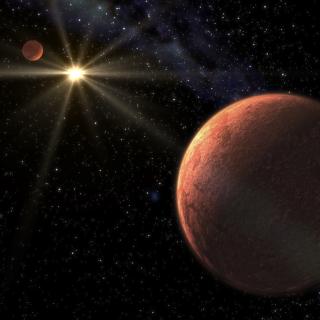Bibcode
Lodieu, N.; Boudreault, S.; Béjar, V. J. S.
Bibliographical reference
Monthly Notices of the Royal Astronomical Society, Volume 445, Issue 4, p.3908-3918
Advertised on:
12
2014
Citations
28
Refereed citations
26
Description
We present the results of photometric, astrometric, and spectroscopic
follow-up of L dwarf candidates identified in the Hyades cluster by
Hogan et al. We obtained low-resolution optical spectroscopy with the
Optical System for Imaging and low-intermediate Resolution Integrated
Spectroscopy spectrograph on the Gran Telescopio de Canarias for all 12
L dwarf candidates as well as new J-band imaging for a subsample of 8 to
confirm their proper motion. We also present mid-infrared photometry
from the Wide Field Infrared Survey Explorer for the Hyades L and T
dwarf candidates and estimate their spectroscopic distances, effective
temperatures, and masses. We confirm the cool nature of several L dwarf
candidates and confirm astrometrically their membership, bridging the
gap between the coolest M dwarfs and the two T dwarfs previously
reported in the Hyades cluster. These members represent valuable
spectral templates at an age of 625 Myr and slightly supersolar
metallicity (Fe/H = +0.13). We update the Hyades mass function across
the hydrogen-burning limit and in the substellar regime. We confirm a
small number numbers of very low mass members below ˜0.1
M⊙ belonging to the Hyades cluster.
Related projects

Very Low Mass Stars, Brown Dwarfs and Planets
Our goal is to study the processes that lead to the formation of low mass stars, brown dwarfs and planets and to characterize the physical properties of these objects in various evolutionary stages. Low mass stars and brown dwarfs are likely the most numerous type of objects in our Galaxy but due to their low intrinsic luminosity they are not so
Rafael
Rebolo López

Exoplanets and Astrobiology
The search for life in the universe has been driven by recent discoveries of planets around other stars (known as exoplanets), becoming one of the most active fields in modern astrophysics. The growing number of new exoplanets discovered in recent years and the recent advance on the study of their atmospheres are not only providing new valuable
Enric
Pallé Bago